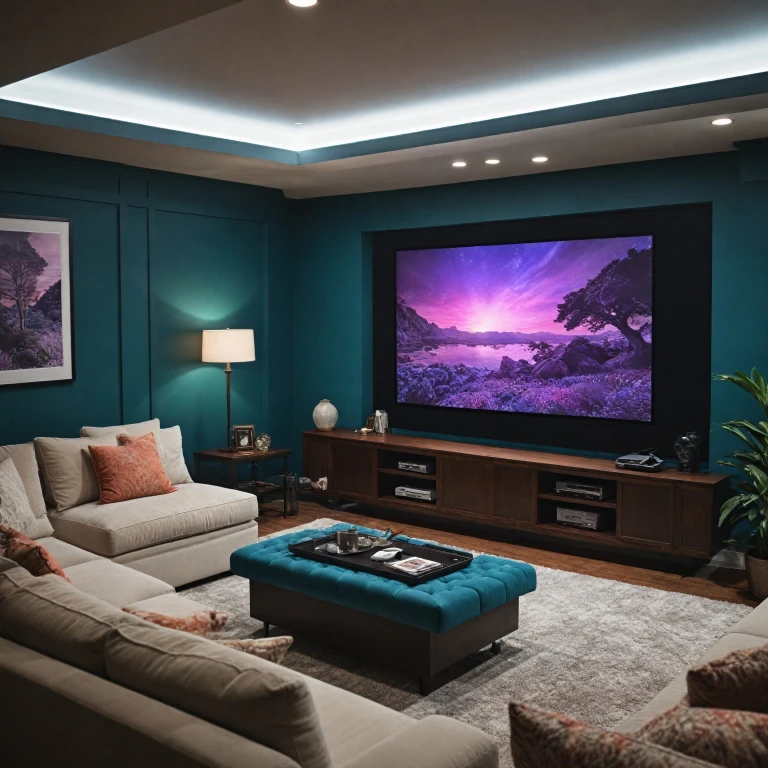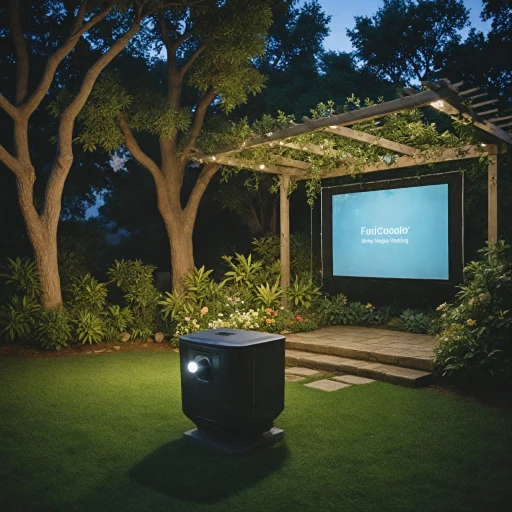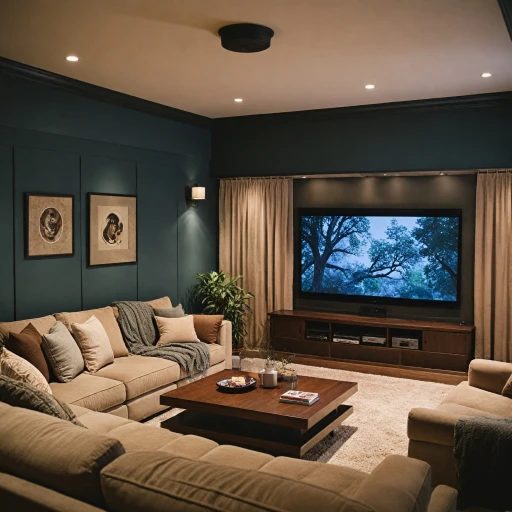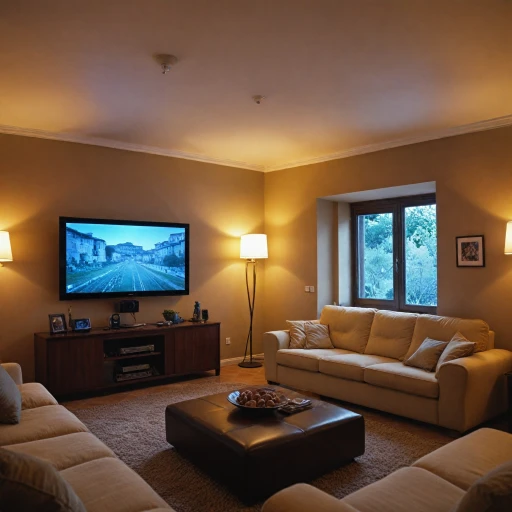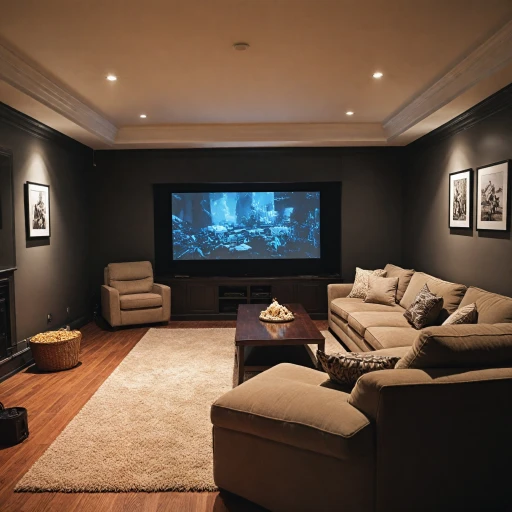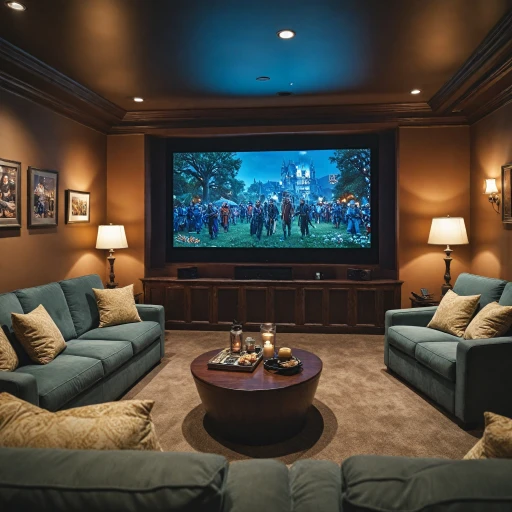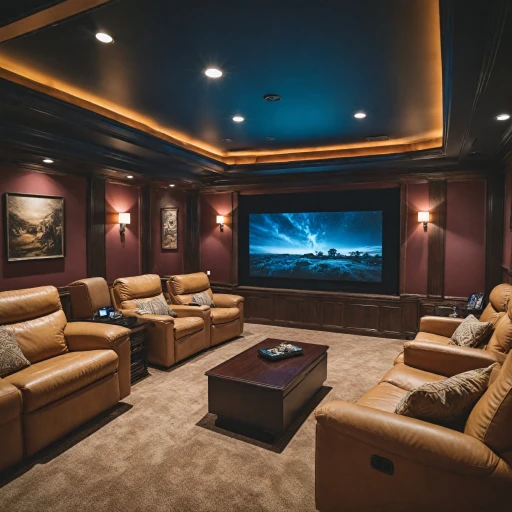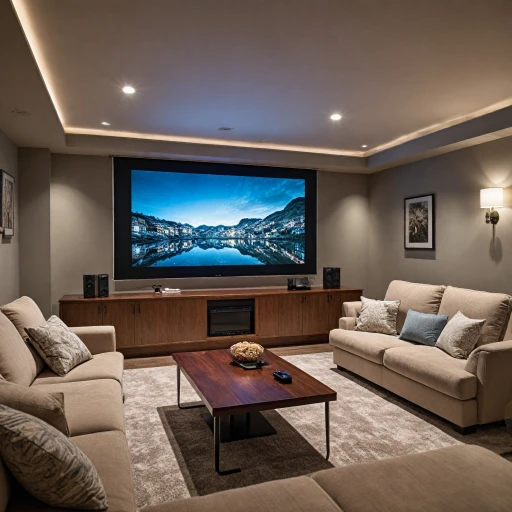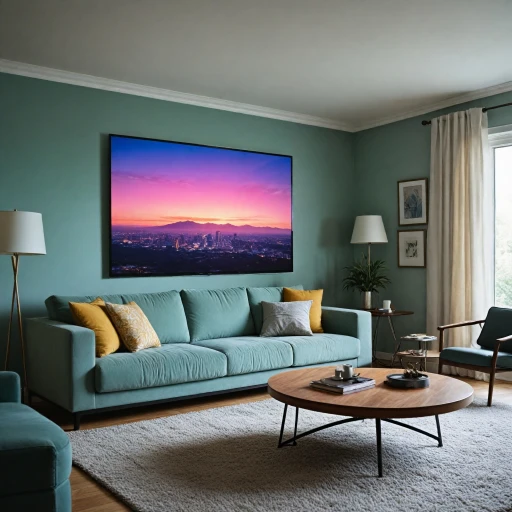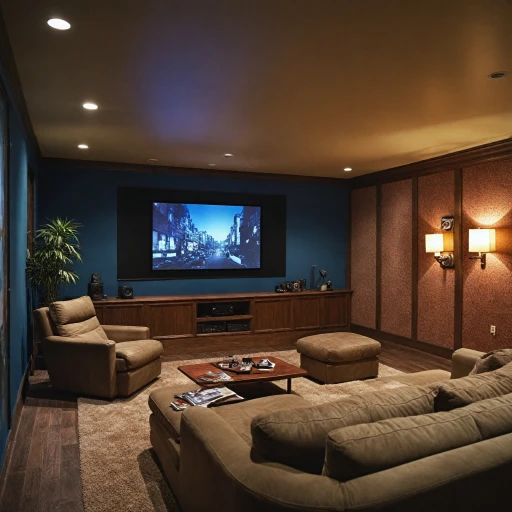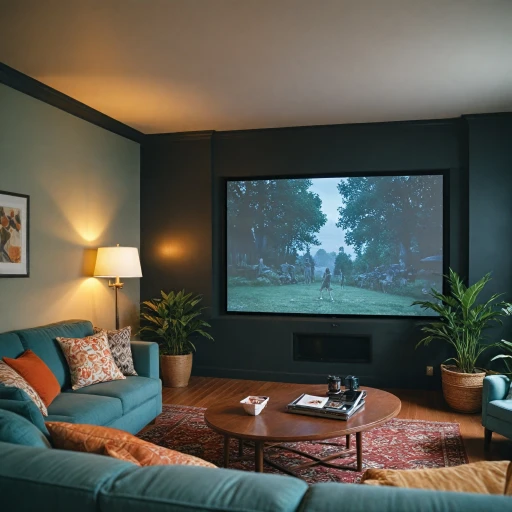
Understanding Dolby Vision in Projectors
Unveiling the Magic Behind Dolby Vision
Dolby Vision is revolutionizing the way we experience cinema quality visuals at home. To fully grasp its impact, it’s essential to understand what Dolby Vision brings to the table for projectors. At its core, Dolby Vision is an advanced form of High Dynamic Range (HDR) that offers potential for stunning improvements in color, contrast, and brightness. This can dramatically enhance the quality of images displayed by your projector. Projectors capable of processing Dolby Vision, like the cutting-edge Xgimi Horizon Ultra, use a more dynamic tone mapping process. This feature adjusts the image on a frame-by-frame basis, ensuring exceptional color accuracy and contrast ratio. It makes movies appear more vibrant and lifelike, transporting you straight into the heart of the action with astonishing picture quality. The technology also leverages a projector's laser light source to offer ultra-sharp images with rich black levels and well-defined detail, even in dark scenes. Unlike standard HDR, Dolby Vision provides a broader color gamut, allowing for more vivid and realistic colors that can replicate the immersive experience of Dolby Cinema right in your living room. In a competitive landscape filled with projector options, having a model with Dolby Vision support ensures you’re getting the best possible image quality. The visual enhancements can be particularly impressive in projectors with higher ANSI lumens, which are necessary to accommodate for the increased brightness Dolby Vision requires. Discover more about captivating visuals and the world of 3D projectors here as you continue your journey into home theater excellence. Embrace the realm of Dolby Vision and transform your viewing experience from standard into spectacular.Benefits of Using a Projector with Dolby Vision
The Competitive Advantage of Dolby Vision
When it comes to creating the best possible viewing experience in your home theater, a projector with Dolby Vision is hard to beat. This advanced technology enhances the image quality, making every scene more vivid and true to life. But what exactly does Dolby Vision bring to the table? First and foremost, Dolby Vision sets itself apart by delivering superior color accuracy. By expanding the color gamut, projectors like the xgimi horizon ultra and other Dolby Vision compatible models can display a wider range of colors. This means you get to enjoy a more accurate representation of every hue and tone, bringing your favorite movies to life in a way standard HDR might not. Additionally, Dolby Vision projectors offer enhanced brightness and contrast, crucial elements for any immersive viewing experience. With features such as a high contrast ratio and superior ANSI lumens output, the images projected remain sharp and detailed, even in challenging lighting conditions. This means blacks appear deeper and whites brighter, without washing out the image quality. The secret behind such unparalleled performance often lies in innovative technologies like laser and LED light sources. These provide consistent brightness and color integrity over time. For more on how LED technology enhances viewing experiences, exploring the benefits of LED projectors for home theaters might shed some light. Another key feature is the advanced tone mapping that Dolby Vision projectors employ. By precisely adjusting image elements, this ensures that scenes maintain the optimal level of detail throughout, regardless of the original source material. Features such as pixel shifting also imbue the projected image with superb clarity and definition. Finally, freedom in setup is facilitated by capabilities like lens shift, which makes it easier to achieve the perfect alignment on screen without having to compromise on your desired setup location. Whether you're aiming for a straightforward installation or a short throw projector setup, these features maximize your home cinema flexibility. In summary, the advantages of choosing a Dolby Vision-equipped projector such as the xgimi horizon go beyond basic HDR enhancements. The combination of a superior light source, enhanced color spectrum, and improved brightness and contrast makes it a cornerstone technology for those serious about their home theater experience.Comparing Projectors: Dolby Vision vs. Standard HDR
Dolby Vision versus Standard HDR: A Bright Choice
When it comes to enhancing the home cinema experience, the competition between Dolby Vision and standard HDR projectors often leaves enthusiasts pondering the best choice for vivid picture quality. A projector with Dolby Vision provides a transformed viewing experience, and here’s how it measures up against standard HDR projectors.
First, Dolby Vision projectors, such as the XGIMI Horizon Ultra, excel in delivering superior contrast ratios, ensuring deep black levels and stunning light scenes. The integration of advanced tone mapping technology contributes to precise color accuracy, allowing each image to maintain the intended creative vision. Dolby Vision also supports a broader color gamut, providing rich, lifelike images that elevate picture quality beyond standard HDR capabilities.
Moreover, the brightness of a Dolby Vision projector often surpasses standard HDR options. With ANSI lumens that enhance clarity in various lighting conditions, whether it's a dark home theater or a semi-lit room, the light source in these projectors ensures enduring brightness and vivid images.
Projectors like the laser-based models further amplify the differences. Laser projectors with Dolby Vision not only enhance the color spectrum but also improve the longevity of the light source compared to traditional lamp-based HDR projectors. This feature enhances the sustainability and long-term usability of the projector.
For those who prioritize an immersive Dolby cinema experience at home, selecting a projector with Dolby Vision becomes an easy, logical choice. The interplay between contrast, color, and brightness creates a scene that resonates with the high standards of dedicated cinema projectors. On the opposite end, standard HDR projectors, while offering decent image and color quality, may not achieve the same level of depth and vibrancy, particularly in dynamic scenes.
Whether you're setting up an outdoor movie night or adjusting your new setup to optimize your viewing experience, understanding these differences can guide your decision. For a deeper dive into how projectors can extend beyond indoor use, enhance your outdoor movie experience with a drive-in projector and expand your horizon.
Key Features to Look for in a Dolby Vision Projector
Essential Elements of a Top-Notch Dolby Vision Projector Experience
When embarking on the journey to find the perfect projector, with Dolby Vision, for your home cinema, understanding the essential elements is critical. A projector with Dolby Vision elevates your viewing experience with its superior color accuracy and dynamic range. But what features should you be prioritizing?
Brightness and Light Source: To ensure an immersive viewing experience, focus on theater projectors that boast a high level of brightness. Models like laser projectors with ANSI lumens ratings in the thousands can make a significant difference. The XGIMI Horizon Ultra, for instance, is known for its powerful laser light source that offers exceptional brightness and clarity.
Contrast Ratio and Black Levels: An impressive contrast ratio is crucial for achieving inky blacks and vibrant whites. Look for projectors that excel in this area to appreciate the full spectrum of visuals Dolby Vision is capable of. A Dolby Cinema-like experience is achieved with superior black levels and contrast.
Advanced Tone Mapping: Dolby Vision projectors utilize advanced tone mapping technology to adjust brightness levels, ensuring optimal contrast and image quality in real-time. This results in a more detailed and lifelike image, providing an ultra-realistic visual journey.
Color Gamut and Accuracy: A wide color gamut and precise color accuracy are indispensable for recreating the director's intended vision. Quality projectors should cover a vast portion of the DCI-P3 color space to provide vivid and true-to-life colors.
Resolution and Pixel Shifting: For a crisp and clear picture, opt for projectors with 4K UHD resolution. Some projectors may employ pixel-shifting technology to enhance image sharpness and detail further.
Versatility with Lens Shift and Short Throw: Flexibility in setup can enhance the viewing experience. Lens shift functionality and short throw lenses allow for a variety of installation options, making it easier to customize your home cinema space.
Remember that while Dolby Vision enriches the viewing experience, not all projectors claim the same level of quality. By focusing on these key features, you can ensure superior picture quality, contrast, and vibrant visuals in your home theater setup.
Setting Up Your Home Theater with a Dolby Vision Projector
Optimal Room Setup for a Dolby Vision Experience
Creating an exceptional home theater with a projector featuring Dolby Vision involves strategic planning and placement of various elements to achieve the best picture quality and immersive viewing experience.Choosing the Right Screen
The screen is pivotal in defining how the Dolby Vision projector performs regarding image brightness and quality. Opt for a screen with a high-contrast ratio to optimize black levels and light reflection. Consider a screen that complements your projector's brightness capabilities, especially in rooms where ambient light may be a factor.Controlling Light and Enhancing Brightness
Ambient light can significantly affect the picture quality of your projector. Use blackout curtains or shades to control stray light effectively. Additionally, position projectors strategically to minimize potential glare and reflections that may impact the vision's dynamic range.Calibration for Accurate Color Representation
Proper calibration is crucial for achieving color accuracy and tone mapping, ensuring the colors on display match their intended hues. Many Dolby Vision projectors, including models like the XGIMI Horizon Ultra, come with advanced calibration settings to fine-tune brightness, contrast, and color gamut.Speakers and Audio Setup
While your focus might be on visual excellence, Dolby Cinema-grade sound significantly enhances the immersion. Ensure your audio system matches the high standard of the projector with Dolby Vision. Invest in speakers that provide clear sound and deep bass, positioning them for balanced audio distribution.Choosing the Best Projector Type
Different projector types such as laser projectors or theater projectors come with various benefits and suit different settings. For a seamless blend of clarity and ultra-bright projections, consider using a laser light source. Short throw projectors can also be extremely convenient for smaller spaces while maintaining impressive picture quality.Optimizing Black Levels and Contrast
To get the most out of the projector's capabilities, adjusting settings for perfect contrast and black levels is vital. Ensure that the black levels do not appear washed out, and the contrast ratio delivers deep, rich tones that define the vision's cinematic experience. Techniques like pixel shifting can also enhance image clarity without compromising overall quality.Flexibility with Lens Shift
Utilize the lens shift feature, available in many modern projectors, to adjust the projected image's focus and alignment without needing to move the projector itself. This flexibility ensures that you can easily achieve a perfect frame, enhancing the home cinema experience. By carefully setting up your home theater with these considerations in mind, you can fully enjoy the incredible color accuracy, image quality, and cinema-like black levels that a projector with Dolby Vision offers.Common Challenges and Solutions
Troubleshooting for the Optimum Viewing Experience
- Brightness and Ambient Light: Achieving ideal brightness is crucial when setting up projectors with Dolby Vision. Ensure your cinema room has controlled lighting to enhance the projector’s ANSI lumens capacity and avoid any image washout. Blackout curtains can help regulate light.
- Color Accuracy: For the best color accuracy, take advantage of the Dolby Vision settings. Adjust contrast ratios and engage tone mapping features carefully. With the wide color gamut provided by Dolby Vision, you can expect precise and vivid picture quality.
- Lens Adjustments: To achieve the ideal picture alignment, utilize the lens shift capabilities often available in Dolby Cinema projectors. This feature is significant in maintaining sharp and clear images without distortion.
- Dealing with Calibration: Make routine checks and calibrations on the projector settings. This step ensures you maintain excellent picture quality and colors over time, especially with the advanced features like ultra-high contrast ratios offered by projectors with Dolby Vision.
- Understanding your Projector’s Distances: If you encounter any issues with throw distances, especially with short throw projectors, familiarize yourself with the specific projector requirements to ensure optimal image focus and sizing.
- Software and Firmware Updates: Keep your projector’s software updated. Manufacturers often release updates to improve features such as color accuracy and light source management.
- Black Levels and Contrast: For deep black levels and enhanced contrast, adjust the projector settings according to your screen type. These adjustments are vital to taking full advantage of the projector’s HDR capabilities.
